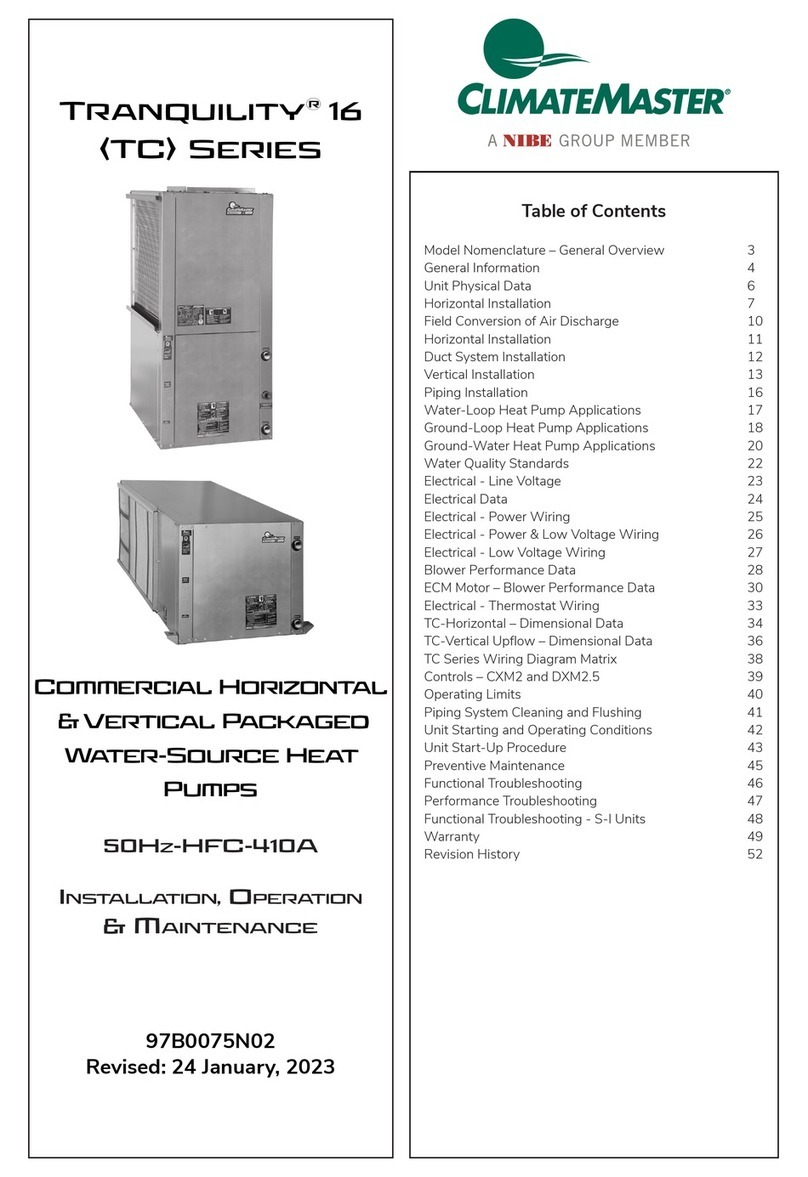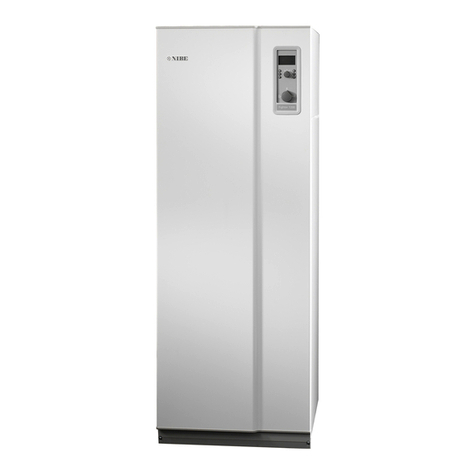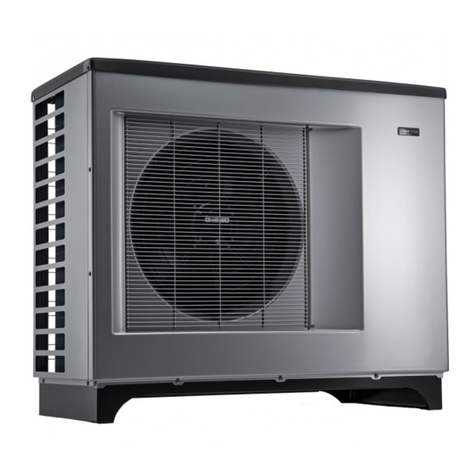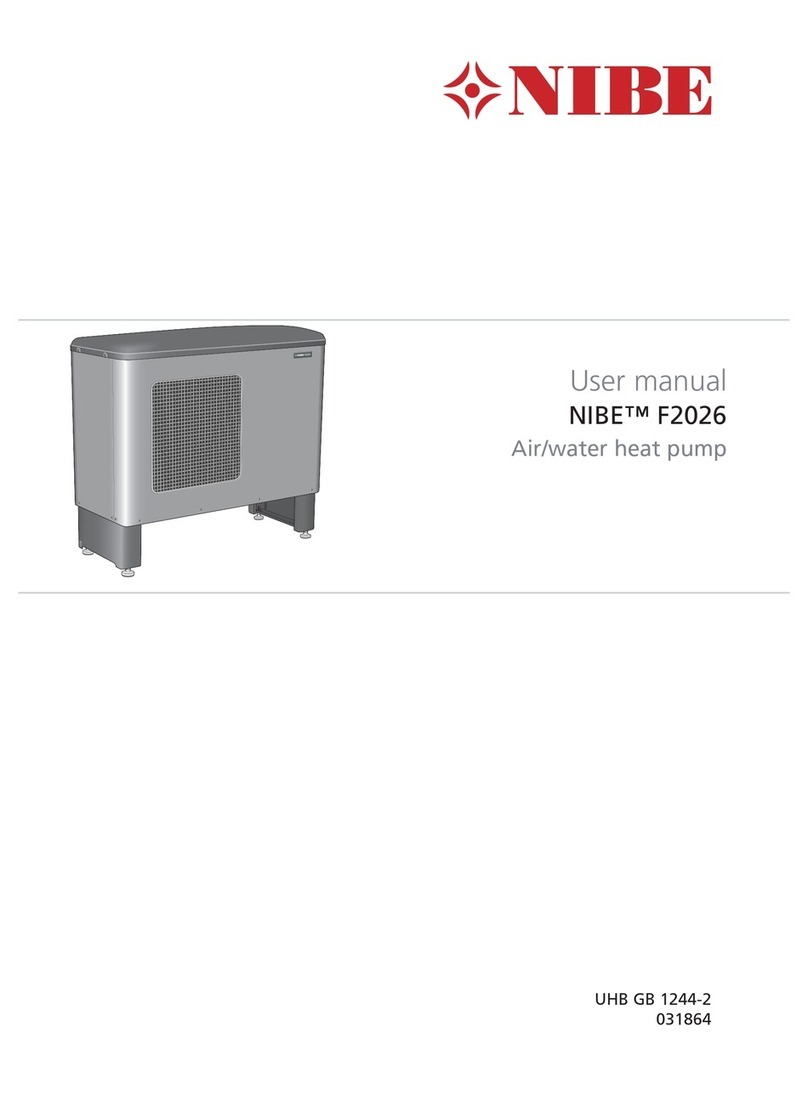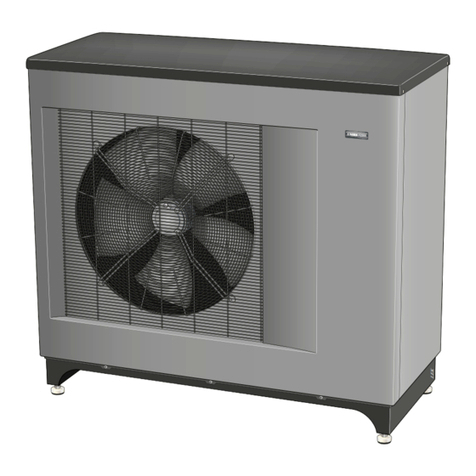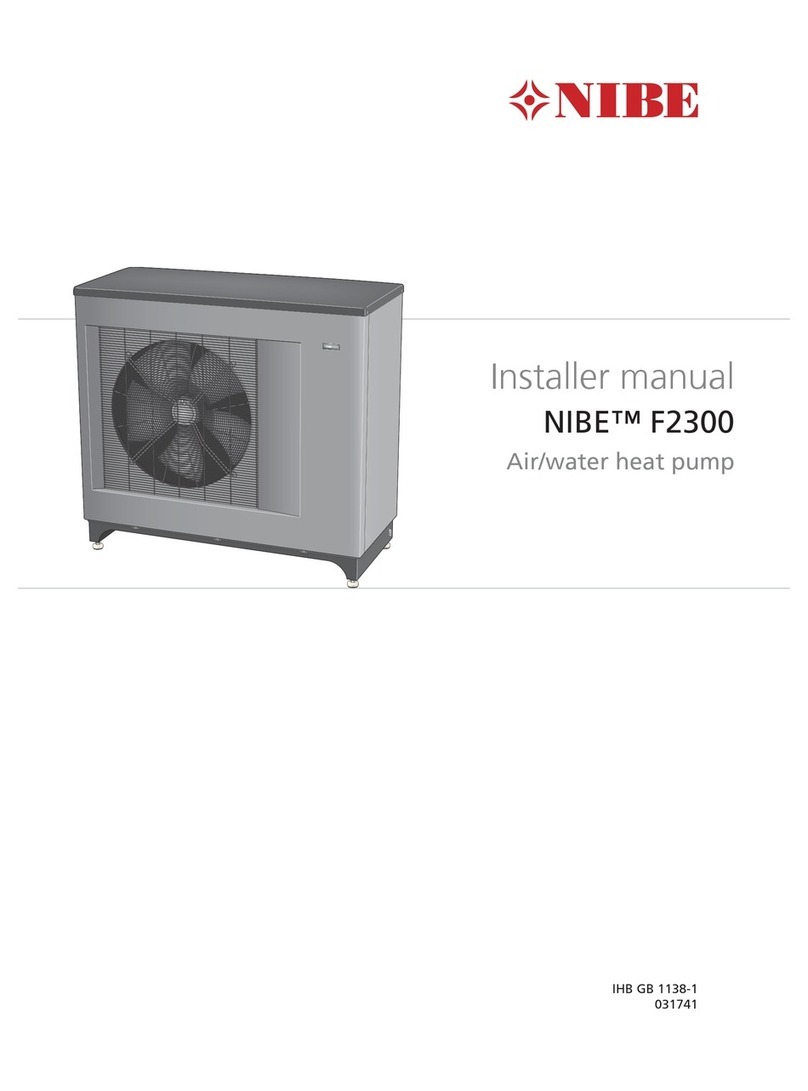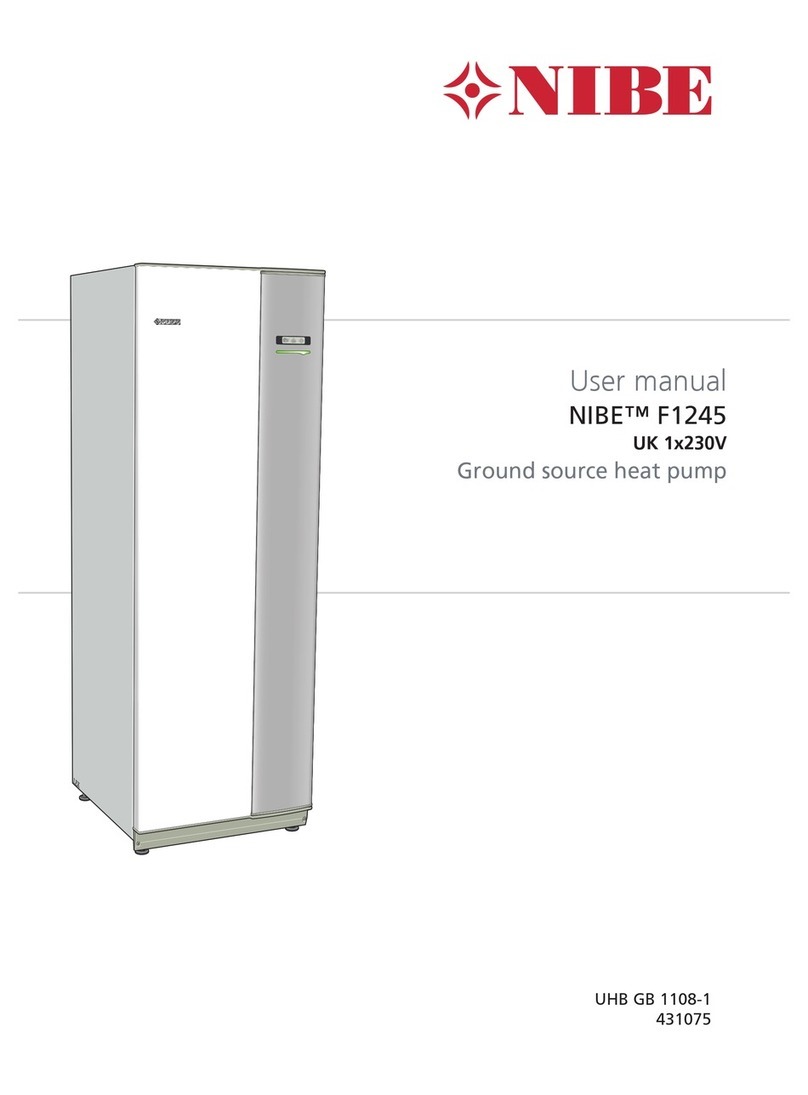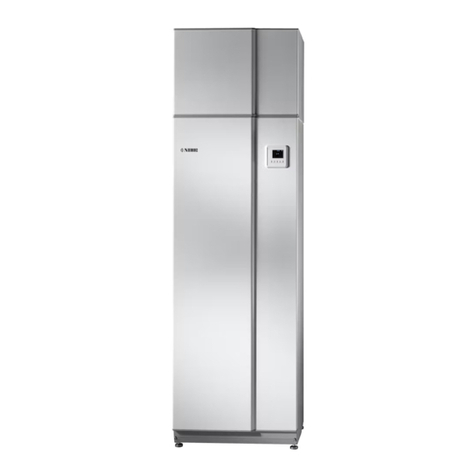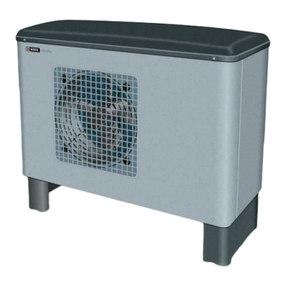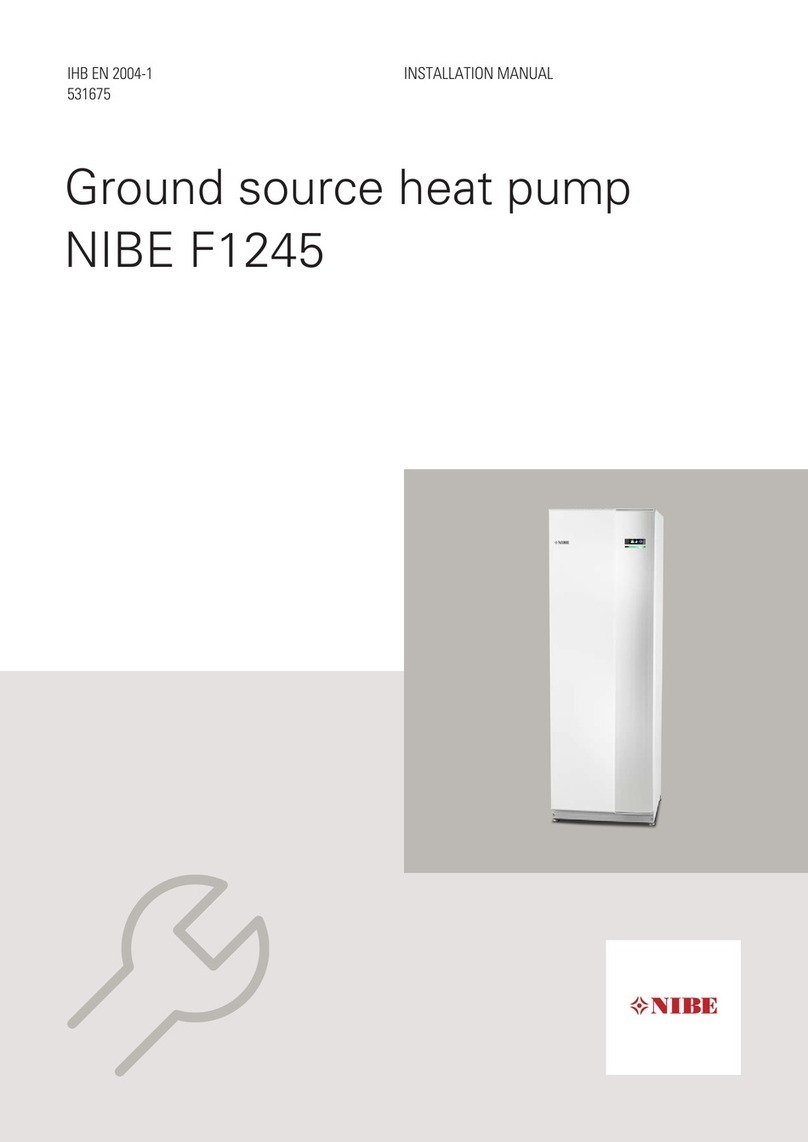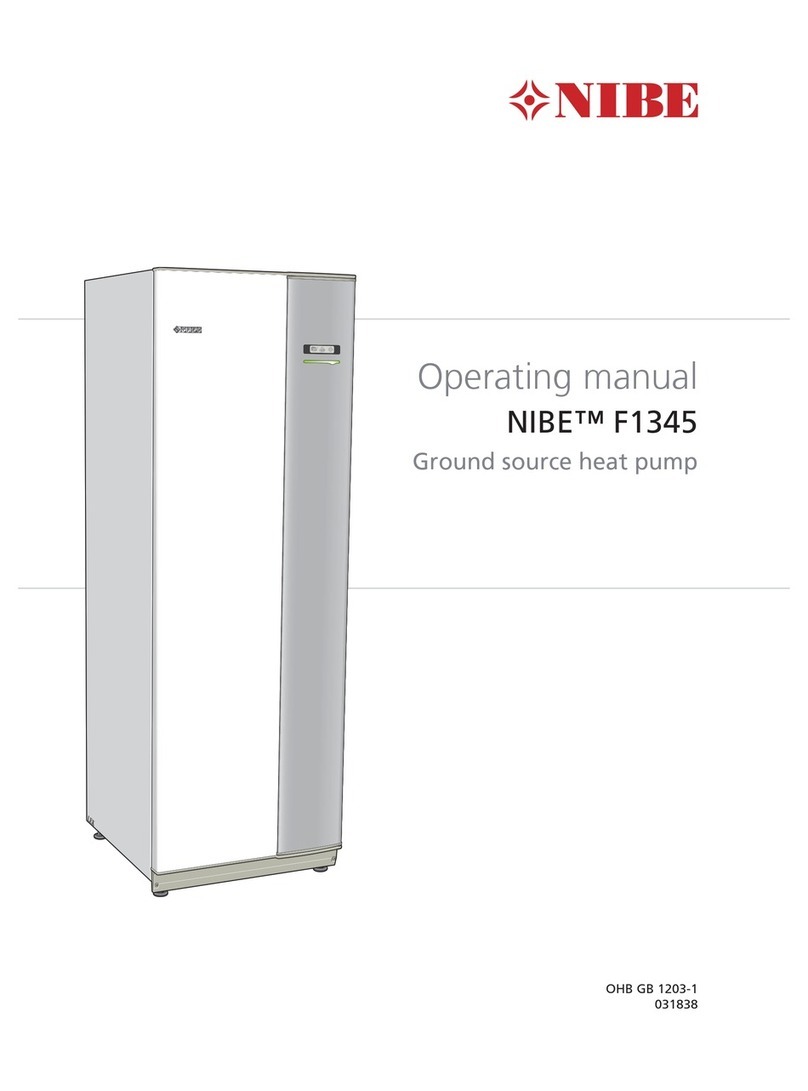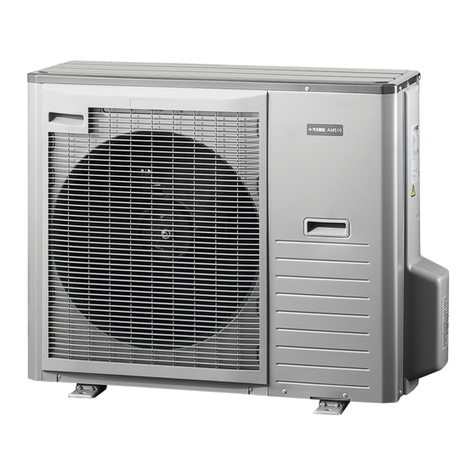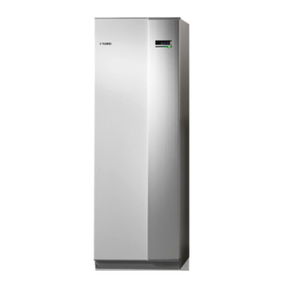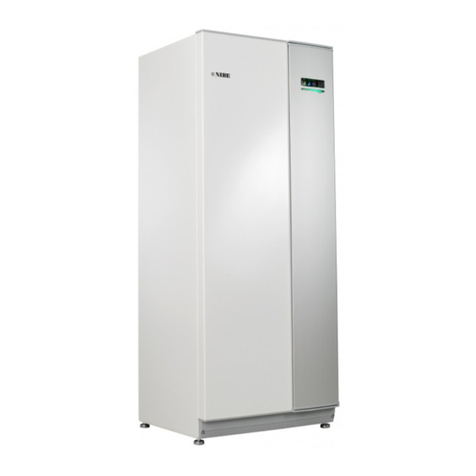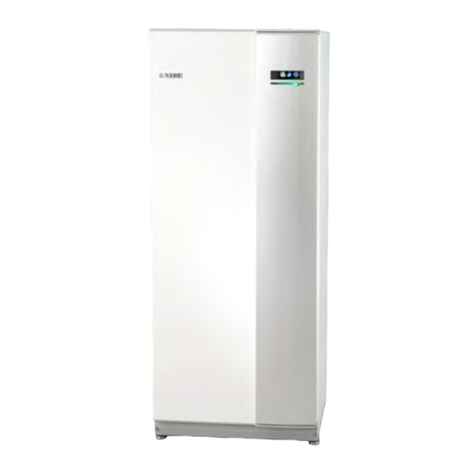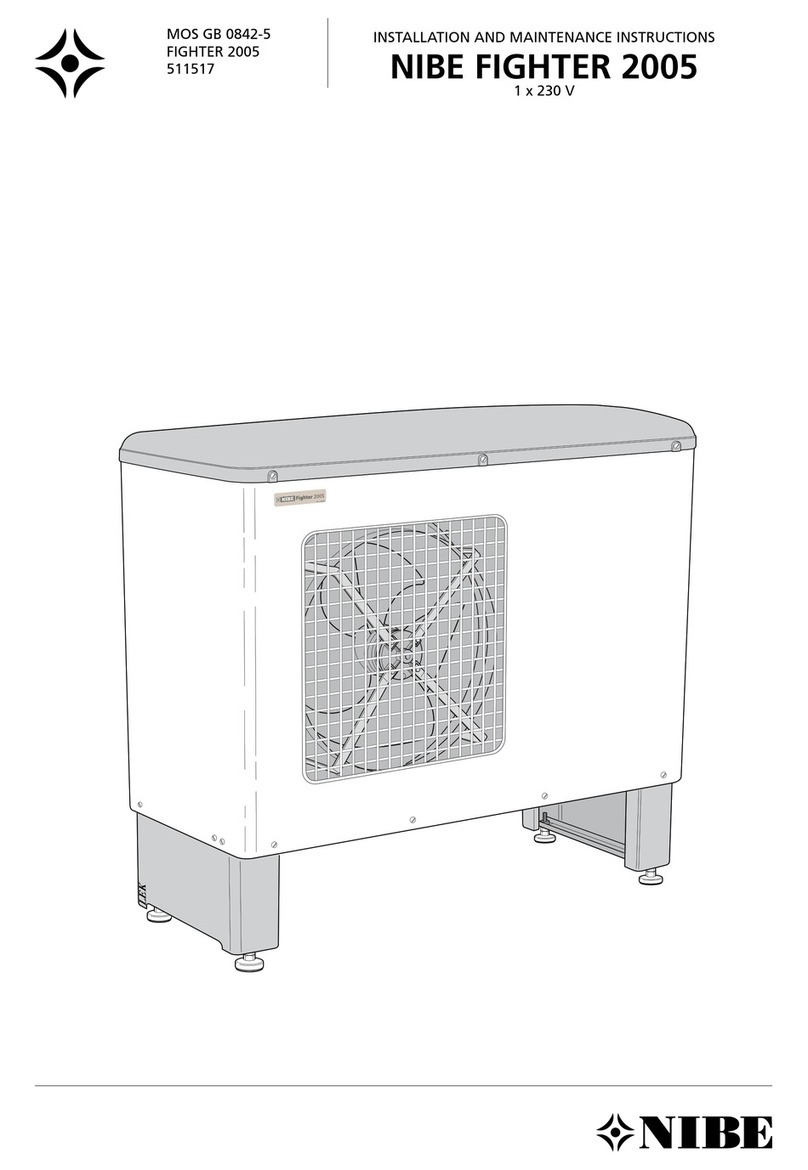
THE HEATING SYSTEM INSTALLED IN YOUR HOME
Your home has been fitted with an innovative but simple to use heating
system known as an ‘Exhaust Air Source Heat Pump’. This type of heating
system has been installed in continental Europe for many years and is now
being used more commonly in the UK. The system is made by NIBE,
a Swedish company.
The heating system replaces the need for a gas boiler but performs the same function. It runs on electricity
so consequently there is no gas installation in your home.
We have fitted this type of heating system in your home for two main reasons:
oTo try to save you money on your household running costs in the face of increasing energy costs
where gas has been rising more than electricity, and
oTo help reduce carbon dioxide emissions (the main ‘Greenhouse gas’ responsible for climate
change).
The system is efficient because every KW of electricity used to run the unit produces approx three KW of
heat energy.
Overview of how the system works
Within the tall unit which is located in the kitchen or in a cupboard is a ventilation system, a hot water
cylinder and a device called a heat pump.
The ventilation system draws warm stale air from the kitchen and bathroom which is fed into the heat pump
which automatically extracts the heat and energy and increases its temperature which is then transferred to
heat the water for radiators and is also deposited in the integral cylinder for your hot water. The extracted
stale air is released outside and air inlets in walls or ceilings introduce new fresh air via cleanable filters to
maintain a healthy internal environment.
A simple summary is provided below of how the heating system and radiators should be used and
controlled based on the latest advice given to us by the manufacturers. We therefore recommend that you
follow this guidance as fully as possible.
Control of the heating system
It is recommended that the internal room sensor, e.g. located in hall or living room, be set at position 5,
where 5 equals approximately 21 degrees C, during the heating season or at a slightly lower level to suit
the amount of heating you require to remain comfortable. To reduce the energy consumption of your home
further the system can be set to a reduced temperature for periods when you are away from the home or at
night. You can also reduce the temperature for a set period whilst you are on vacation. These functions
are set in menu 7 in the controller on the heat pump. If you do not follow this advice and the house is
allowed to go cold, it will take more energy, money and a longer period of time to warm up again. It is
cheaper to leave running continuously, even if you are away during the winter.
To access the setback functions use the following buttons:
Plus button This button is used to scroll through the menu system (forwards) or increase the value
of the selected parameter.
Minus button This button is used to scroll through the menu system (backwards) or lower the
value of the selected parameter.
Enter button This button is used to select a lower menu in the menu system, to activate a
parameter change as well as confirm a parameter change.

